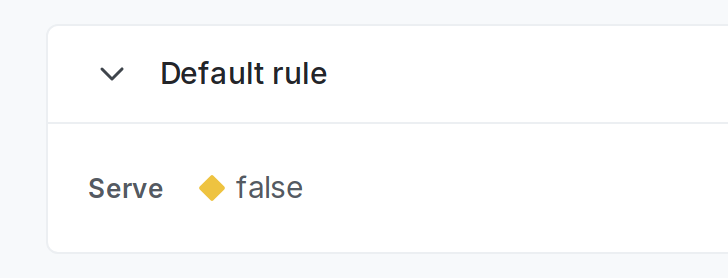This topic explains how to set the default rule for a flag. LaunchDarkly defines a final default rule, sometimes called the “fallthrough” rule, for any contexts that don’t match any of the previous targeting rules on the flag. The default rule can be a single variation, a guarded rollout, a progressive rollout, or a percentage rollout.
Here is an image of a default rule:

You can set the default rule to a specific variation when you create a new flag. If needed, you can later update the default rule to a different variation or to a rollout.
The default rule is different from the fallback value, which is the value that contexts receive if your application can’t connect to LaunchDarkly. To learn more, read Fallback value.
The default rule is also different from the off variation, which is the value LaunchDarkly serves when the flag is off. To learn more, read The off variation.
Here is how LaunchDarkly sets the default rule for new flags:
You can later update the default rule to a different variation or to a rollout.
To update a flag’s default rule:
In this example, all contexts that have not been targeted by any other rules will receive false.
To learn how to set a default rule using JSON, read Default rule or variation.